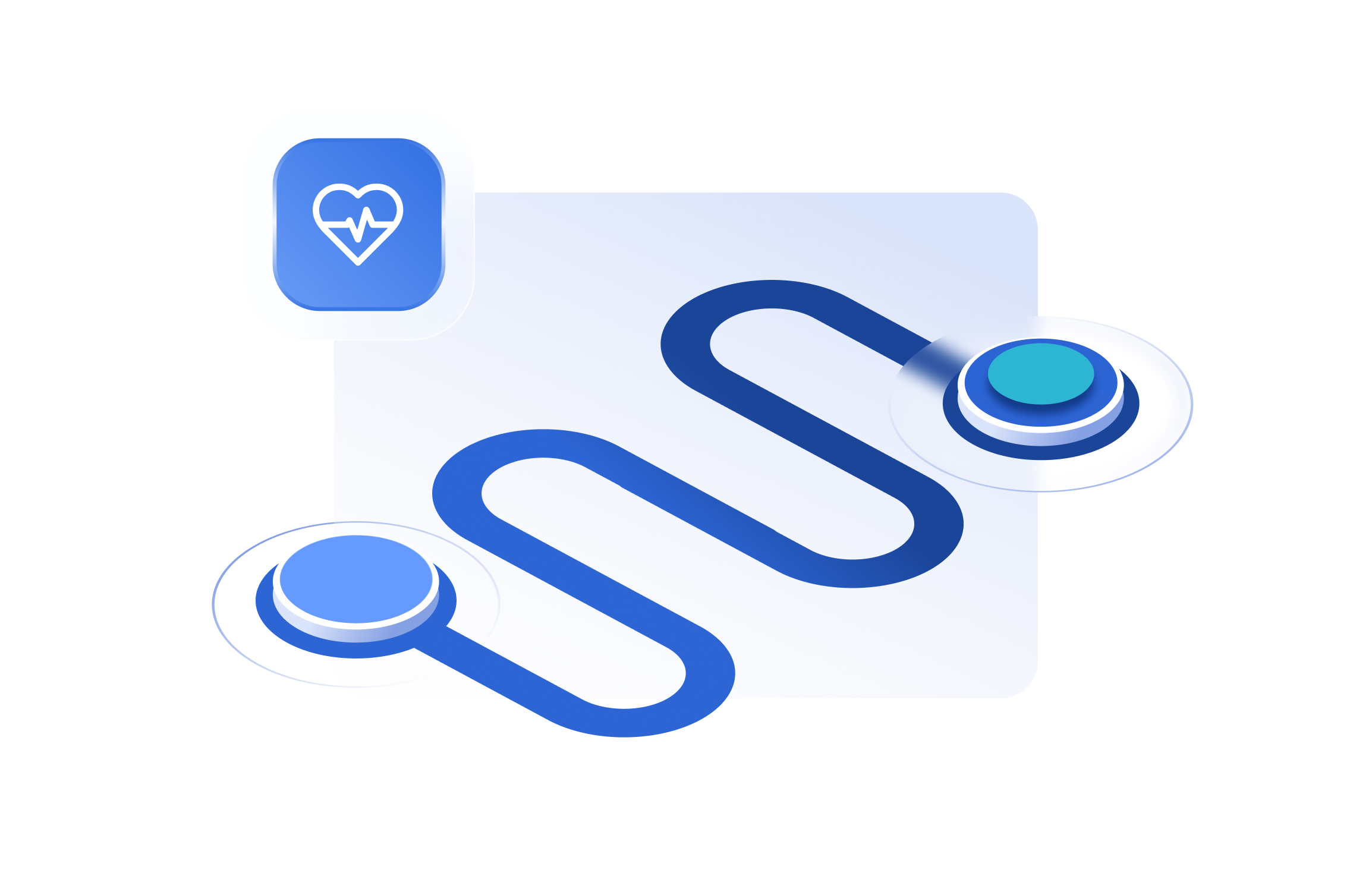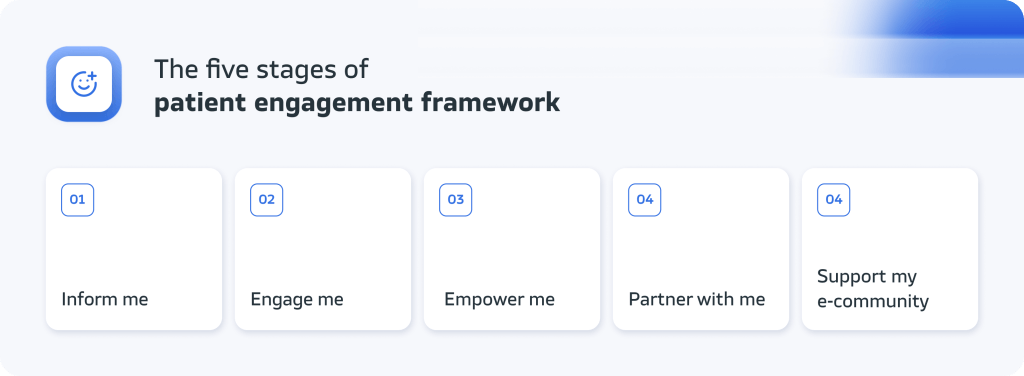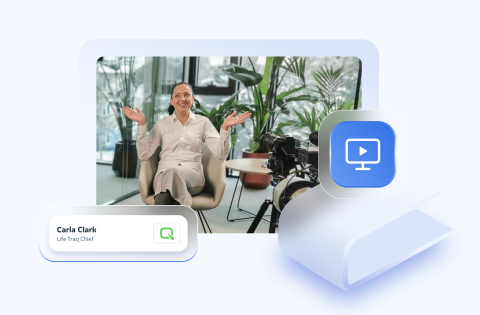
- MedTech
Navigating the Healthtech Landscape through Efficient Patient Engagement
Understanding the nuances of patient engagement is a pivotal element in reshaping the healthcare landscape. A panoramic glance over the healthtech terrain reveals a profound shift in focus, underscoring the escalating significance of efficient patient engagement. Recent findings from DataHorizzon Research spotlight this transformative wave, indicating a staggering market value growth from USD 17.9 Billion in 2022 to a projected USD 50.9 Billion by 2032, with a notable Compound Annual Growth Rate (CAGR) of 11.1%. This statistical ascent reflects the industry’s robust trajectory and underscores the compelling need for healthcare stakeholders to embrace and optimize patient engagement strategies.
Table of Contents
Patient Engagement vs. Patient Experience
Patient engagement, often entangled with the concept of patient experience, demands a nuanced understanding in the healthcare ecosystem. Distinguishing these concepts becomes imperative for healthcare providers seeking to deliver unparalleled care.
Patient Experience:
The patient experience is an individual’s comprehensive encounter with the healthcare system, spanning every touchpoint from appointment scheduling to post-treatment follow-ups. It encapsulates not just the clinical aspects but the emotional journey throughout the healthcare process. Examples include:
- Smooth appointment scheduling processes.
- Compassionate bedside manner and communication.
- Thoughtful follow-ups post-treatment, showing ongoing care and concern.
Patient Engagement:
In contrast, patient engagement actively involves individuals in managing their health, fostering collaboration between healthcare providers and patients. It goes beyond clinical encounters, emphasizing proactive patient involvement. Examples include:
- Patients actively participate in shared decision-making.
- Utilization of digital tools for self-monitoring and management.
- Health education programs encourage lifestyle changes and adherence to treatment plans.
Unveiling Patient Engagement Software
The emergence of patient engagement software heralds a transformative era in healthcare, where technological innovations bridge the gap between providers and patients. Delving into this digital landscape, one finds a multifaceted array of software, each playing a distinct role in elevating patient care.
Enhancing Patient Engagement Through Innovative Technologies
In the evolving healthcare landscape, patient self-management apps have emerged as pivotal tools for fostering behavior change and promoting effective health management. These smartphone applications cover diverse areas, from aiding in weight loss to ensuring medication adherence. Studies underscore the transformative impact of these apps, revealing that users are three times more likely to exhibit high patient engagement. This heightened engagement facilitates improved communication with healthcare providers and encourages the utilization of other cutting-edge technologies in patient interaction.
Breaking Geographical Barriers: Telehealth and Video Visits
Telehealth and video visit tools have become indispensable in reshaping the dynamics of healthcare delivery, leveraging digital technology to facilitate real-time, audio-visual consultations between healthcare providers and patients. By breaking down geographical barriers, these tools enable individuals, especially those in remote or underserved areas, to access medical advice, diagnoses, and treatment remotely. The result is enhanced accessibility and continuous care, with the added convenience of follow-ups and monitoring in the comfort of one’s home.
Empowering Patients: Remote Patient Monitoring (RPM)
These tools allow individuals to track and report their health data using various devices, such as wearable sensors and smart devices. The real-time transmission of vital signs and health metrics to healthcare providers facilitates proactive management of chronic conditions and early intervention in case of concerning developments. RPM promotes patient engagement and transforms the traditional patient-provider dynamic into a collaborative and informed partnership.
Addressing Root Causes: Social Determinants of Health Screening Tools
Beyond traditional clinical indicators, Social Determinants of Health (SDOH) screening tools provide a comprehensive understanding of an individual’s health. These tools systematically assess social, economic, and environmental factors influencing health, including housing stability, access to education, employment status, and community safety. By identifying these determinants, healthcare providers can tailor care plans to address the root causes of health disparities, fostering a more holistic and personalized approach to patient care.
Digital Health Literacy and Tailored Solutions: Keys to Integration
Integrating patient engagement technologies into population health management requires a nuanced approach considering digital health literacy and tailored solutions. Recognizing populations’ diverse needs and preferences, including literacy levels and language access, is crucial. A 2021 survey underscored the importance of addressing digital health literacy barriers by providing support such as instructional materials or low-tech alternatives for hesitant populations. This emphasis on inclusivity ensures that the benefits of innovative healthcare technologies are accessible to all, contributing to the overall improvement of population health.
The Five Stages of Patient Engagement Framework
Within the intricate tapestry of patient engagement, a structured framework emerges, guiding healthcare interactions through five distinct stages. The genesis of this framework lies in collaborative efforts, a fusion of insights from healthcare professionals and technology experts.
Stage 1: Inform Me
In the initial stage, patients seek knowledge about their health, including treatment options, potential risks, and lifestyle adjustments. It lays the groundwork for informed decision-making.
Stage 2: Engage Me
Active involvement in healthcare decisions characterizes this stage, fostering a two-way communication channel between patients and providers. It ensures a shared understanding of the healthcare journey. Examples include:
Stage 3: Empower Me
Empowerment takes center stage as patients gain the tools and knowledge to take control of their health. This involves education on self-management, lifestyle changes, and adherence to treatment plans. Examples include:
Stage 4: Partner With Me
This stage emphasizes collaboration between patients and providers in decision-making, fostering a shared responsibility for treatment plans and health goals. Examples include:
Stage 5: Support My E-Community
The final stage recognizes the role of digital communities in sustaining long-term engagement. These platforms allow patients to share experiences, seek advice, and provide support.
Top KPIs to track patient engagement
In the intricate tapestry of modern medical practice, Key Performance Indicators (KPIs) act as the compass, guiding healthcare providers towards efficiency and patient-centricity. The significance of these metrics lies in their ability to measure and evaluate various facets of patient engagement.
Number of New Appointments:
- A key indicator offering a pulse check on the accessibility of healthcare services. It reflects how easily patients can secure appointments and access necessary care.
Patient Wait Time:
- An efficiency gauge in service delivery, patient wait time measures the time individuals spend waiting for appointments or in healthcare facilities.
Patient Satisfaction Rates:
- A crucial metric reflecting patients’ overall satisfaction with the healthcare services received. It encompasses the entire patient journey.
Social Media Mentions:
- This KPI serves as an indicator of public perception. Social media mentions can highlight positive experiences or highlight areas needing improvement.
Patient Lifetime Value:
- Measuring the long-term relationship between patients and healthcare providers, patient lifetime value assesses the overall value a patient brings to the healthcare institution over time.
Patient Churn Rate:
- Examining patient retention, the churn rate measures the frequency at which patients terminate their association with a healthcare provider.
Number of Patient Touchpoints:
- This KPI evaluates the depth of patient engagement by measuring the frequency and variety of interactions between patients and healthcare providers.
Average Call Handle Time:
- An efficiency marker for communication channels, the average call handle time assesses how effectively healthcare providers manage patient inquiries and concerns over the phone.
Maximum Patient Recall Time:
- This metric gauges the timeliness in patient-provider communication, reflecting how quickly healthcare providers can recall patient information and respond to queries.
Driving Patient Engagement: Blurify’s Innovative Approach in the LifeTraq Case
Blurify effectively managed patient engagement in the LifeTraq case by implementing innovative strategies. The platform allows users to track personalized motivational paths, earn points for achievements, participate in training sessions, and receive rewards, all while ensuring compliance with HIPAA regulations.
By integrating gamification and intuitive design, we increased user engagement significantly. Additionally, their collaboration with various tools, including JotForm for surveys and tests, tailored the solution to LifeTraq’s specific needs.
Blurify’s commitment to understanding client requirements and delivering a solution that meets expectations resulted in an application that not only operates effectively but also positively impacts patient experiences in the healthcare system.
Check out LifeTraq case study >>>
Kay takeaways
Patient engagement is not just a trend; it’s a transformative force shaping the future of healthcare. This paradigm shift redefines the patient-provider relationship, emphasizing collaboration, empowerment, and informed decision-making. Recognizing and adapting to this cultural evolution is crucial.
Embracing technology for improved patient engagement is not an option but an imperative for quality healthcare delivery. Blurify is ready to usher in this era with advanced telemedical systems, offering expertise in scalability, reliability, stability, data security, and compliance. Reach out for a free evaluation of your ideas as we partner in the journey towards efficient patient engagement.








